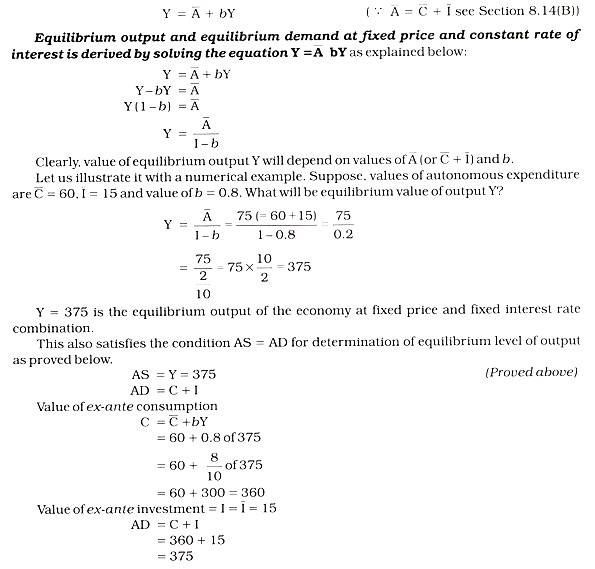Determination of Economic Equilibrium Level of Output!
Output is at its equilibrium when quantity of output produced (AS) is equal to quantity demanded (AD).
The economy is in equilibrium when aggregate demand represented by C + I is equal to total output.
(a) Determination of Equilibrium level of Output:
ADVERTISEMENTS:
Under short run fixed price, equilibrium level of output is determined solely by level of ex-ante aggregate demand. How? To keep the explanation of this theory simple, certain assumptions are made,
(i) Prices of final goods are assumed to be constant (fixed) in short run because the economy takes time to respond to forces of excess supply or demand
(ii) Theory is applicable under only short run
(iii) Supply is perfectly elastic, which means at given price, suppliers are willing to supply whatever amount of goods consumers will demand
ADVERTISEMENTS:
(iv) It is a two sector (Household and Firm) economy assuming no government and no foreign trade.
Under such circumstances, in short run when supply is infinitely elastic at constant price, equilibrium output will be determined solely by aggregate amount of demand at that price in the economy. This is known as effective demand principle. Here, aggregate supply is relatively a passive force in determining the level of output in short run. Now, the question is how is aggregate demand at fixed price derived?
(b) Derivation of Equilibrium Output and Aggregate Demand:
At short run fixed price, value of ex-ante aggregate demand for final goods (AD) is equal to sum total of ex-ante consumption expenditure (C) and ex-ante investment expenditure (I), i.e., AD = C + I. Under effective demand principle, equilibrium output (aggregate supply) of final goods (Y) is equal to aggregate demand (AD), i.e., Y = AD.
ADVERTISEMENTS:
Again Y is represented by equation:
